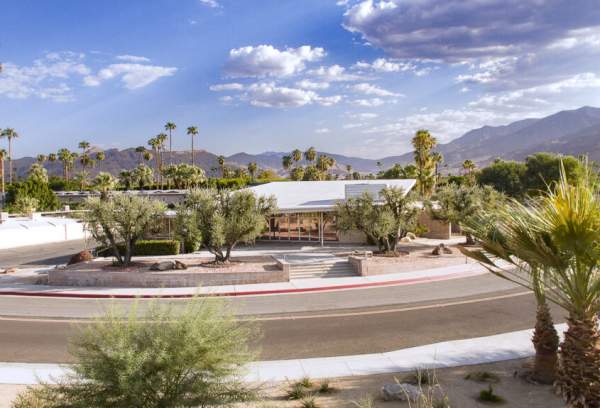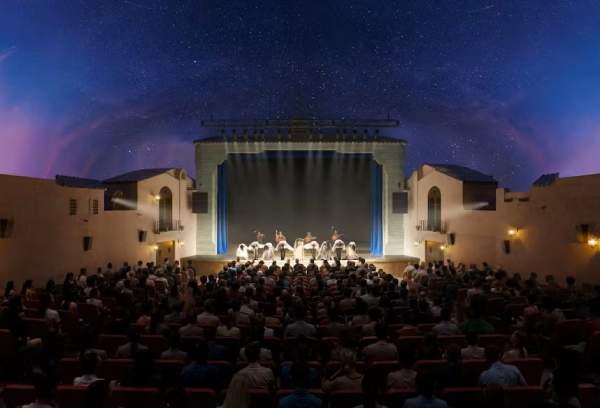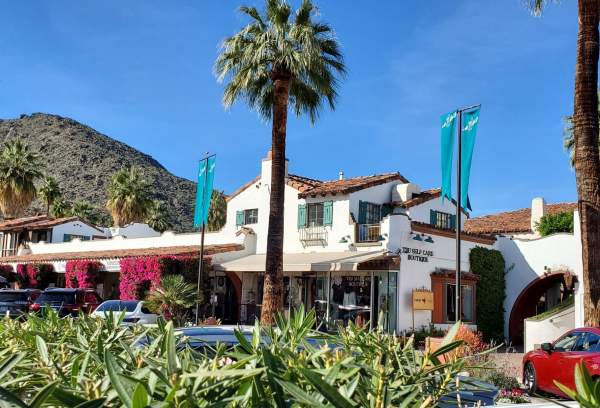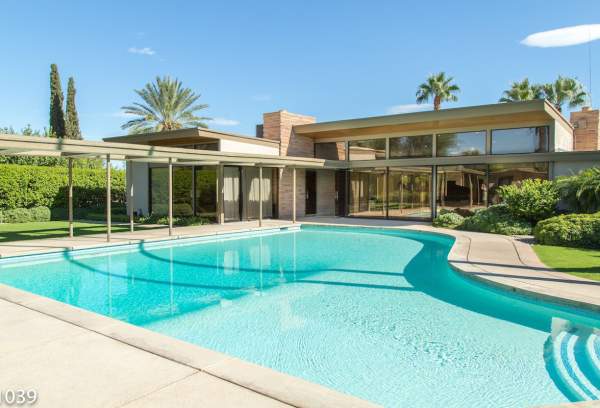Step into mid-century magic and Hollywood lore at the Twin Palms Frank Sinatra Estate, where glamour, music, and drama once echoed through the halls—and around the piano-shaped pool.
In 1947, a 31-year-old Frank Sinatra was riding a wave of fame and looking for an escape hatch from the chaos of Hollywood. But, in his own words, he wanted to “get away from it all—but not too far away.” So, he set his sights on a quiet desert town that was starting to buzz with star power: Palm Springs.
Sinatra bought a plot of land at 1148 East Alejo Road, in what’s now known as the Movie Colony neighborhood, and commissioned his very first home. It became his primary residence from 1948 to 1957, and today, it remains one of Palm Springs’ most iconic architectural gems.
At the time, Palm Springs was still relatively quiet. Still, the Movie Colony neighborhood quickly became Hollywood's secret playground, with stars like Lucille Ball, Tony Curtis, and Dinah Shore owning homes there. The proximity to Los Angeles—just under two hours—allowed actors to satisfy studio contracts that required them to remain within easy reach.
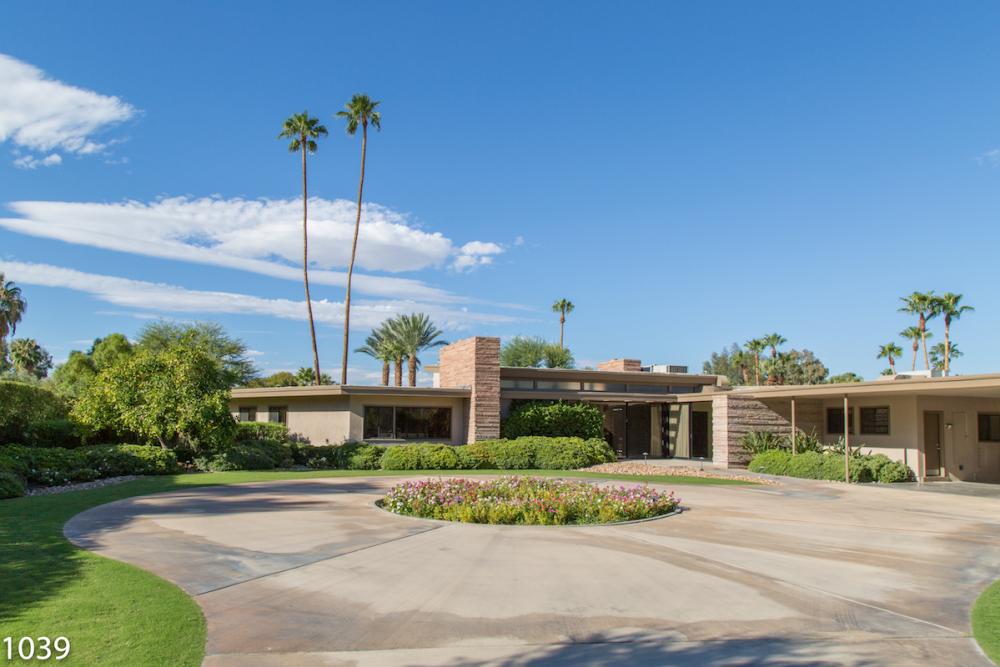
The Architect, the Ice Cream, and the Deadline
Legend has it that Sinatra, dressed in a white sailor hat and eating an ice cream cone, walked into architect E. Stewart Williams’s office in May 1947 with a vision—and a timeline. He wanted a grand Georgian-style mansion ready in time for a lavish Christmas bash.
Horrified at the thought of plunking Georgian architecture in the modernist desertscape, Williams cleverly presented two sets of blueprints: one Georgian and one modern. Frank picked the latter—thankfully—saving Williams’s budding career and setting a new standard for desert modernism.
Construction crews worked day and night, and the home was ready just in time for a New Year’s Eve blowout that set the tone for the years to come: champagne, celebrities, and plenty of Jack Daniels.
Sinatra's decision to go with Williams’s modern design didn’t just benefit the home—it helped kickstart the Desert Modernism movement, which would come to define Palm Springs architecture for decades. Architect E. Stewart Williams was just getting started. Twin Palms became a springboard for his career, leading to modernist masterpieces like the Palm Springs Art Museum and Coachella Savings & Loan buildings.
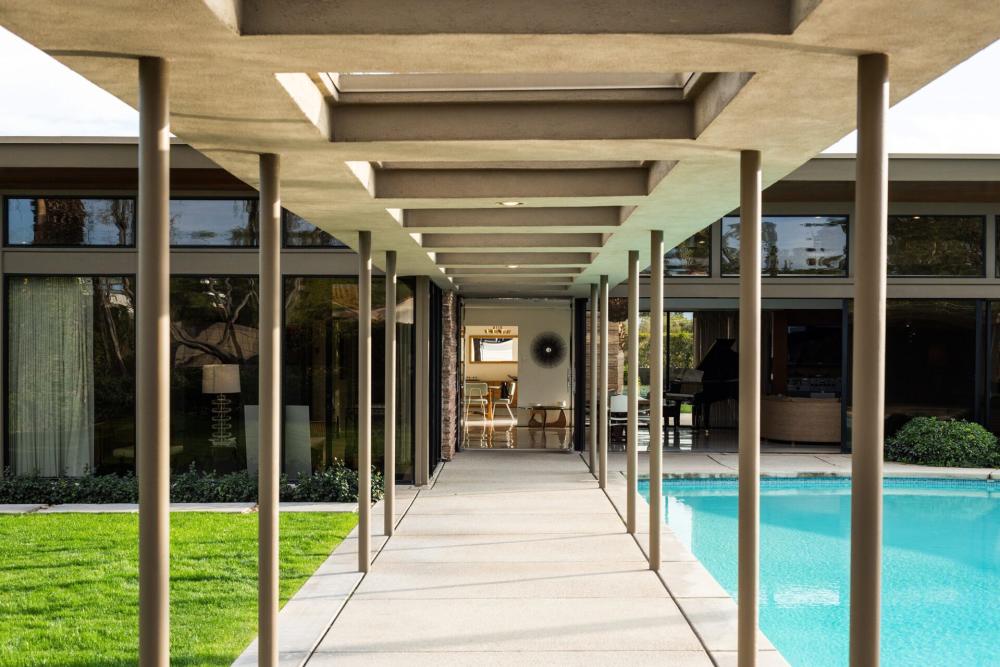
Midcentury Marvel with a Touch of Mischief
Though Sinatra initially wanted a traditional look, the result was a sleek, modern home that made headlines and helped define Palm Springs modern architecture. Williams’s design featured long horizontal lines, flat planes, and floor-to-ceiling glass, blending seamlessly with the desert landscape.
At 4,500 square feet, the estate includes four bedrooms, seven bathrooms, a canopy skylight entry, and the now-famous piano-shaped pool (though the architect swears it was unintentional). The pool house includes a kitchenette and cabana showers, perfect for entertaining or cooling off after a fight.
Frank’s bedroom was set apart in its own wing, a nod to his need for privacy: “to get away from it all, but not too far away.”
And then there were the twin palm trees—tall and dramatic, just like Frank himself. Rumor has it they were once the tallest in the valley. Sinatra famously raised a Jack Daniels flag between them when cocktail hour began, summoning Hollywood neighbors like Bob Hope, Bing Crosby, and Cary Grant to join the festivities.
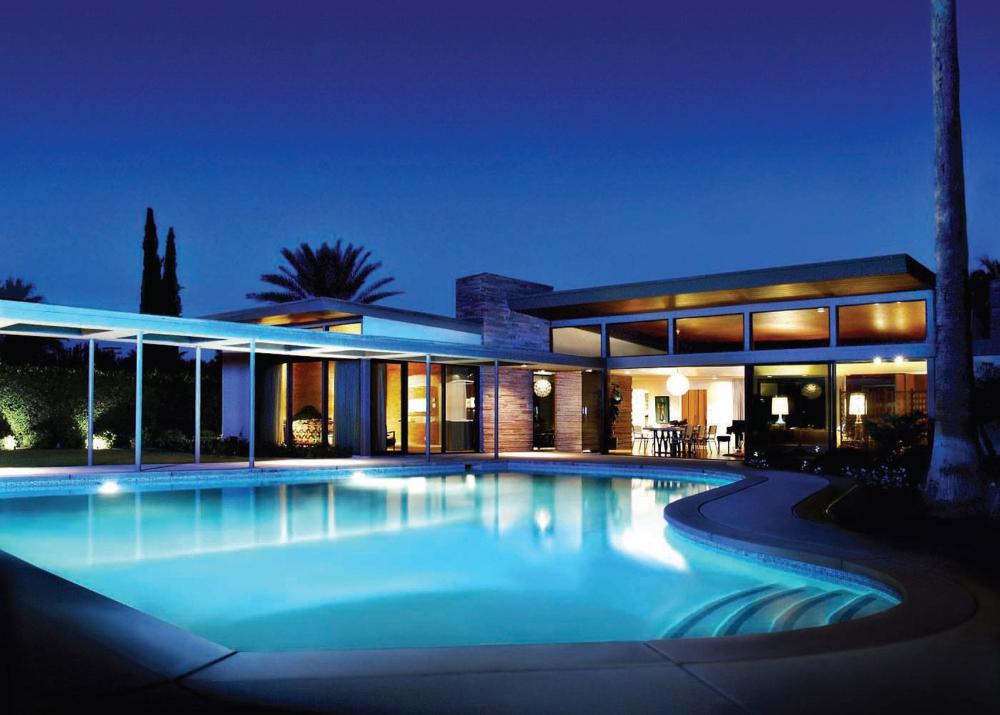
A Home Full of Sinatra Soul
Today, the Twin Palms Estate has been restored, capturing the look and feel of its glamorous heyday. Visitors will find vintage designer furniture, a 1950s recording system like the one Frank used to record demos in the house, and a state-of-the-art sound system that can fill every room with Sinatra’s smooth vocals on command.
The snow-white and sleek kitchen still reflects the original design but is updated with Viking appliances and classic St. Charles cabinetry. Personal touches like family photos, memorabilia, and subtle nods to the Rat Pack era give the estate a soul as rich as Sinatra’s baritone.
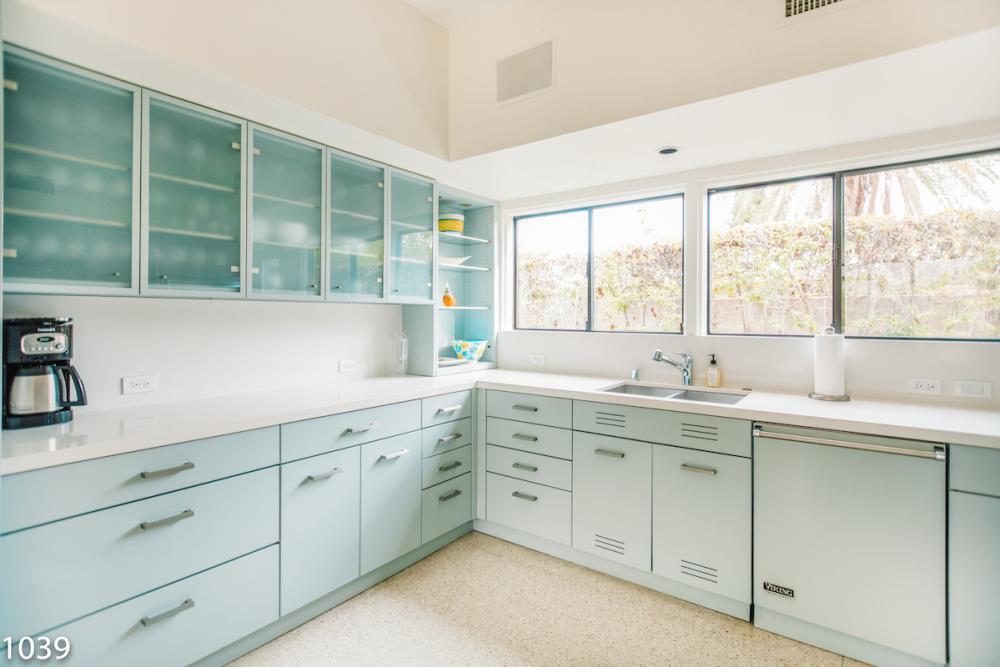
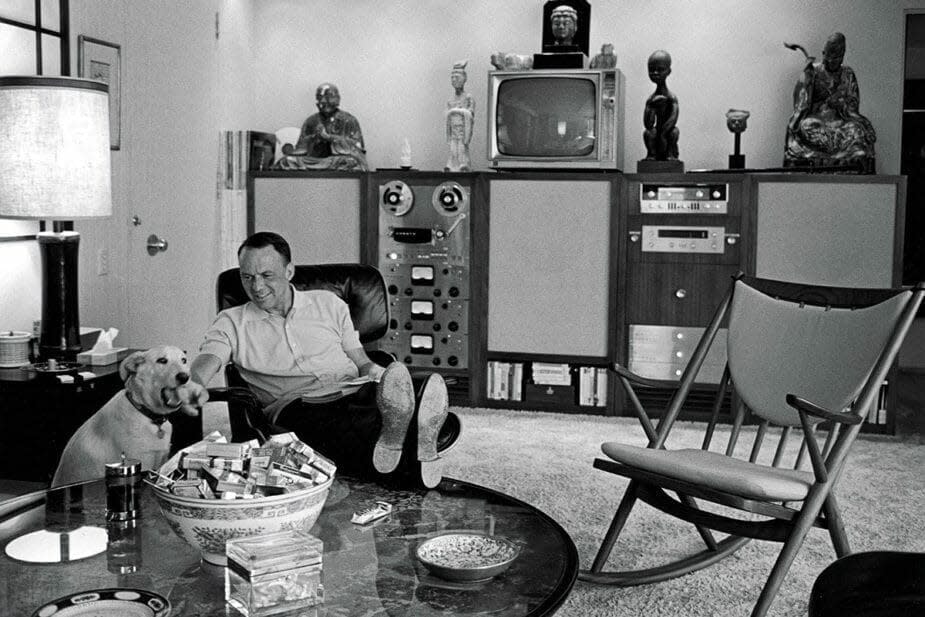
Recording in the Living Room? Rumor has it that Sinatra tested arrangements and phrasing for some of his hits right from his living room using the home’s professional-grade recording system.
Hollywood Nights and Champagne Fights
Behind the elegant façade, the estate witnessed as much drama as any classic Sinatra ballad. Frank divorced his first wife, Nancy Barbato, soon after the home was built. Enter Ava Gardner—smoldering, brilliant, and just as fiery as Frank. They married in 1951 and moved into Twin Palms, where their love story often boiled over into headline-making chaos.
Ava once described Twin Palms as “the site of probably the most spectacular fight of our young married life.” And that’s saying something. Legend has it a champagne bottle thrown during one such altercation missed its target—Ava’s head—but left a dent in the master bathroom sink, which remains to this day.
Sinatra once threw all of Gardner’s belongings into the driveway after a fight over an alleged affair with Lana Turner. And if walls could talk, they might whisper about Sinatra’s other visitors—including reputed mobster Sam Giancana and a parade of Hollywood elite.
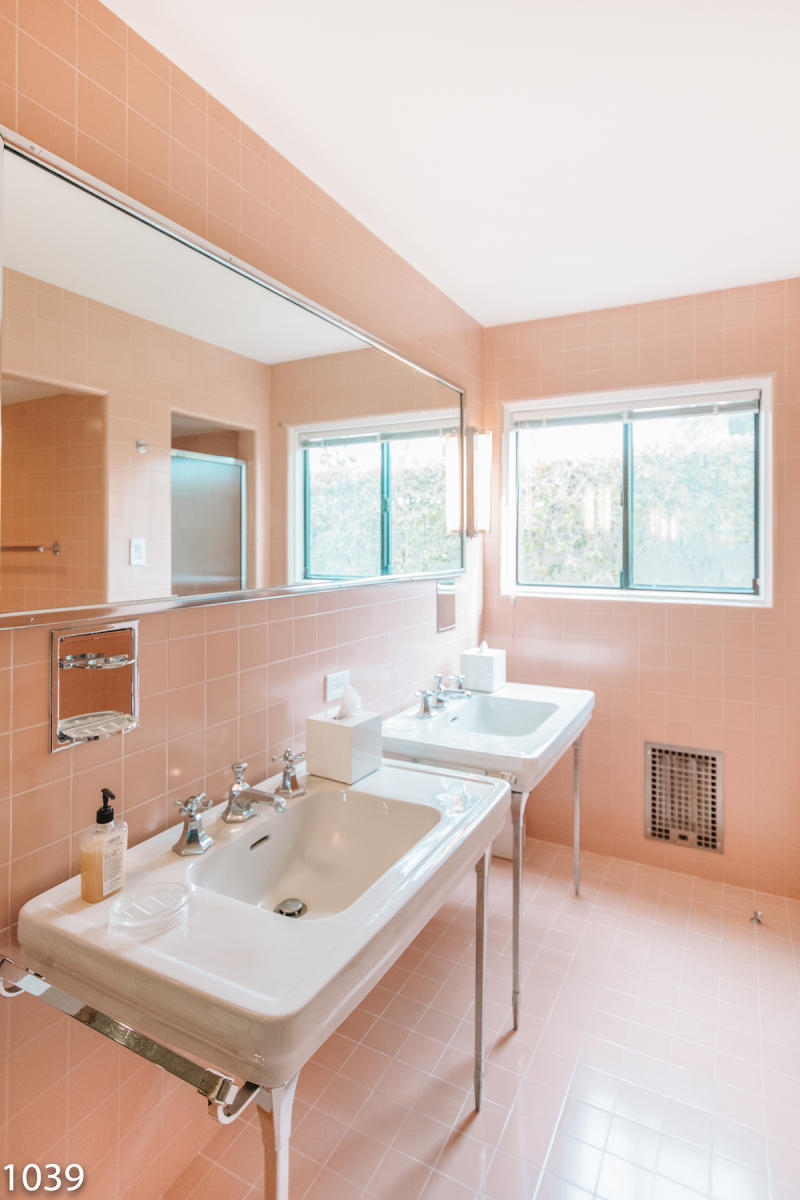
After the Curtain Fell
By 1957, the marriage was over—and so was Sinatra’s chapter at Twin Palms. He sold the home and relocated to nearby Rancho Mirage, where he built a new compound known as “Villa Maggio.” But he never truly left the desert. Sinatra remained a fixture of the Coachella Valley until his death in 1998.
In a final twist befitting Old Blue Eyes, his fourth wife, Barbara, didn’t even inform his children that the end was near. Sinatra passed away surrounded by a small circle, leaving behind a legacy of music and a physical one in the form of Twin Palms.
He’s buried at Desert Memorial Park in Cathedral City, next to his father. His tombstone reads: “The Best Is Yet to Come.”
Twin Palms Estate Stays
Today, the Twin Palms Estate is available for event rentals and overnight stays, offering a rare chance to walk in the footsteps of a legend. Whether you love music, architecture, or Hollywood history, this Palm Springs gem is a must-see. It has also appeared in films, documentaries, and editorial photo shoots, helping cement its status as a visual symbol of Palm Springs chic.
So raise a glass (or hoist a flag) and toast to Sinatra’s timeless taste, tempestuous love life, and unforgettable contribution to Palm Springs’ golden age.
Movie Colony Self-Walking Tour
Frank Sinatra Palm Springs Hangouts: Self-Guided Tour
Johnny Costa's Ristorante
From Sacred Space to Center Stage
- 8 min read
Transforming Frey’s Desert Gem into Dezart Performs Playhouse…
The Plaza Theatre: A Star Returns to the Spotlight
- 12 min read
Built in the striking early Spanish-style architecture, The Plaza…
La Plaza: The Heart of Historic Palm Springs
- 8 min read
The Vision of Julia Carnell Julia Carnell, a philanthropist and…
Growing Up Mattel- A Palm Springs Toy Story
- 11 min read
Mink stoles and martinis. A 6-year-old with Unlimited Toys. Add Mattel…
Live Like a Star: Rent a Hollywood Home in Palm Springs
- 7 min read
Palm Springs began as a place of healing, prized for its warm, dry air…
